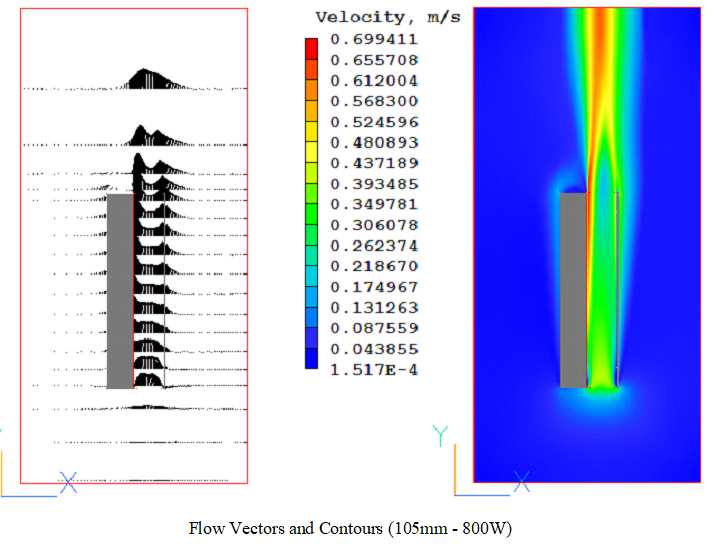Numerical Solution of Natural Convection in Vertical Channels
DOI:
https://doi.org/10.63318/waujpasv3i2_18Keywords:
Natural convection, Numerical solution, Vertical channelsAbstract
A numerical study was conducted on a large vertical channel simulating passive solar air collector.
The k– turbulence model, implemented using the PHOENICS software, was applied to a vertical
channel measuring 1 m in height and 1 m in width. The channel was heated from one side by a
uniform heat flux (UHF), representing the absorber plate, while the opposite side (glazing)
remained unheated. Different heat inputs (Qin) and various aspect ratios (s/H) were tested. The
governing equations, including turbulence transport equations, were solved using the finite volume
method. Velocity profiles were determined to monitor the hydraulic development of airflow along
the channel. Results showed that the average velocity increased with decreasing aspect ratio, while
the mass flow rate increased with increasing aspect ratio. The Nusselt number - Nu(s) - and the
Reynolds number - Re(s) - were used as the dimensionless heat transfer and air flow rate
respectively were correlated against two independent variables, the modified Rayleigh number -
Ra* - and aspect ratio - s/H. Various empirical correlations were derived of the airflow and heat
transfer rate represented by Nu(s) and Re(s) respectively. Numerical results were validated against
previous experimental data from the literature, showing good agreement.
Downloads

Downloads
Published
Issue
Section
License

This work is licensed under a Creative Commons Attribution-NonCommercial 4.0 International License.
This journal uses Creative Commons Attribution-Noncommerical 4.0 International License (CC BY-NC 4.0), which permits use, sharing, adaptation, distribution and reproduction in any medium or format, as long as you give appropriate credit to the original author(s) and the source, provide a link to the Creative Commons license, and indicate if changes were made. To view a copy of this license, visit https://creativecommons.org/licenses/by-nc/4.0/.
Copyright of articles
Authors retain copyright of their articles published in this journal.




